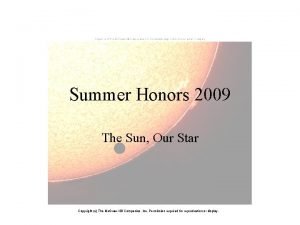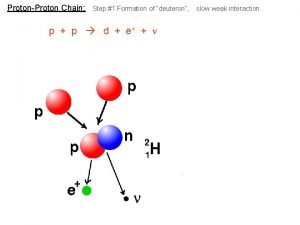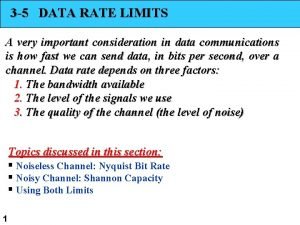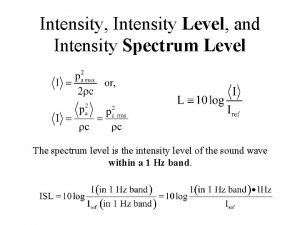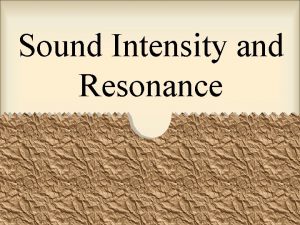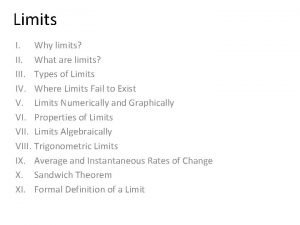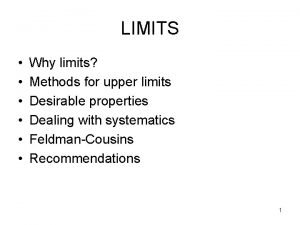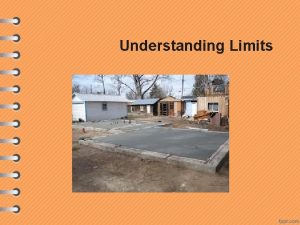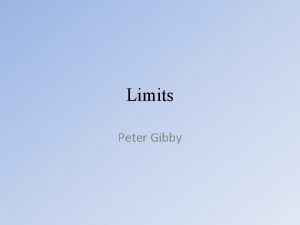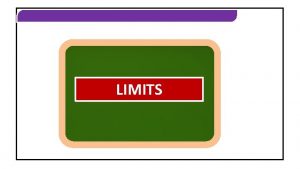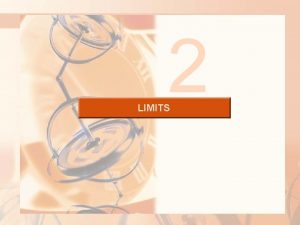f Limits to Proton Intensity Total proton rate












- Slides: 12

f Limits to Proton Intensity § Total proton rate from Proton Source (Linac+Booster): Ø Booster batch size • ~4 -5 E 12 protons/batch, depending on beam quality required. Ø Booster repetition rate Historically our biggest worry • 15 Hz instantaneous • Currently ~9 Hz, limited by RF system. Ø Beam loss • Damage and/or activation of Booster components • Above ground radiation § Total protons accelerated in Main Injector: Ø Maximum main injector load • • Six “slots” for booster batches (3 E 13) Up to ~11 with slip stacking (4. 5 -5. 5 E 13) Beam stability (RF issues) Beam loss concerns Critical path for Nu. MI/MINOS Ø Cycle time: • 1. 4 s + loading time (1/15 s per booster batch) Mu 2 e, April 23, 2009 - Prebys 1

f Proton Delivery Average Booster Activation Mini. Boo. NE Nu. MI Factor of 15 increase in protons Mu 2 e, April 23, 2009 - Prebys 2

f Total Booster Output Mu 2 e, April 23, 2009 - Prebys 3

f After the 2007 Shutdown § After the 2007 shutdown, the remaining Proton Plan Projects will he Ø Rest of Booster Correctors • In the 12 remaining long sections. • In the 24 short straight sections. Ø Upgraded gamma-t jump system in Booster (maybe) • Capable of running at required repetition rate • Must be installed along with correctors Ø Booster chopper notcher • Reduce losses when creating extraction loss § These are all currently scheduled for the 2008 shutdown § We allow a year after this to achieve the ultimate benefits Ø Proton plan will officially end in mid to late 2009 § It is likely that the plan will absorb some scope to enable full 15 Hz operation. Ø Ø Refurbish RF anode supply Retrofit half the RF bias supplies Recommission RF cavity tuner cooling Not necessary for Nu. MI Mu 2 e, April 23, 2009 - Prebys 4

f § § Booster Corrector System Biggest single project in plan Replace all 48 (original) Booster corrector packages. Ø Unique new design § Six independent multipoles Ø Stronger H and V dipoles • ± 1 cm beam motion throughout cycle Ø Stronger quad • Arbitrary tune working point throughout cycle Ø Skew quad • Coupling, same strength as before. Ø Sextupole and skew sextupole at every period. • Less emittance blowup • More control of harmonic resonances. § Integrated BPM ~16” Ø Saves space Mu 2 e, April 23, 2009 - Prebys 5

f Corrector Prototype Bad hair day Ready for testing Mu 2 e, April 23, 2009 - Prebys 6

f Potting Mu 2 e, April 23, 2009 - Prebys 7

f Initial Installation § Installed ¼ of the new Booster corrector system (12/48) in 2008 shutdown Ø Odd long straights (primarily vertical control) Remainder of system will be completed in July and installed in the 2009 shutdown. 8

f Prototype Installation § All power supplies and water connected § Pulsing (hard) on beam off cycles § Proceeding with beam tests Mu 2 e, April 23, 2009 - Prebys 9

f Current Status § Partial system integrated into operation Ø Dipoles scaled to behave like existing dipoles and integrated into closed orbit program Ø Higher order correctors integrated with existing system in transparent (and therefore limited way) § All correctors completed Ø Ready to install in 2009 summer shutdown Mu 2 e, April 23, 2009 - Prebys 10

f Importance to Mu 2 e § The booster has more or less demonstrated the proton flux required by NOv. A § We are taking steps to insure the hardware improvements needed to go to 15 Hz will be made. § It is assumed that the new corrector system will reduce losses to the point where the booster can run continuously at 15 Hz, as required by Mu 2 e Ø No one will work on this if we don’t push Mu 2 e, April 23, 2009 - Prebys 11

f Goals for student § Initial Ø Get closed orbit correction working Ø Pretty straightforward, all code already in place § Ph. D Ø Lots of options involving more sophisticated used of higher order elements and/or utilizing the position control for more sophisticated use of the collimation system. Mu 2 e, April 23, 2009 - Prebys 12
 Horizontal
Horizontal Shape 65
Shape 65 Proton proton chain
Proton proton chain Fission definition
Fission definition Proton proton chain
Proton proton chain Data rate limits
Data rate limits Total revenues minus total costs equals
Total revenues minus total costs equals Pasivo total sobre activo total
Pasivo total sobre activo total Total revenue minus total expenses
Total revenue minus total expenses Total revenues minus total costs equals
Total revenues minus total costs equals Total revenues minus total costs equals
Total revenues minus total costs equals Formula of general fertility rate
Formula of general fertility rate Total fertility rate
Total fertility rate


